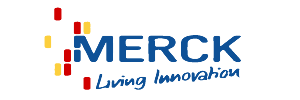Overview
This year, our project intends to achieve protein polymerization with the help of TAL effector, a DNA-binding protein, which can recognize specific nucleic acid sequences. With circular DNA, plasmid, as the connection medium, expressed proteins in the host can form a complex selectively, so that a variety of enzyme combinations can be used to complete different tasks. Compared to traditional methods, the advantages of the project lie in selective polymerization of proteins, and the ability to mediate polymerization between more proteins.
Enzyme polymerization: In prokaryotic cells, enzymes are freely dispersed. However, our fused protein can be effectively anchored and brought closer to each other. In this way, it can shorten the time for substrates to transport between each enzyme in the pathway, reduce the energy loss of substrate mobilization, and enhance the reaction efficiency.
Enzyme maximization: Because TAL’s recognition sites are fairly abundant and of little specificity, we will be more likely to find corresponding recognition sites on a plasmid. Since there might be more qualified sequences on a plasmid, one of our goals is to find as many of them as possible, so that more enzymes can be polymerized on the same plasmid. This provides us with multiple ways to utilize the element.
Enzyme polymerization plus maximization: As mentioned earlier, our project can achieve enzyme polymerization as well as maximization. Hence, we attempt to combine these two highlights in order to deliver greater value. Among all the enzymes involved in a metabolic pathway, we can factitiously combine several (three, four, five or even more) specific enzymes in order to optimize their reaction synergy.
Based on the above-mentioned facts, we can draw the conclusion that our project has various flexible and extensive applicational prospects, due to its fundamentality. Through preliminary consideration, we believe our project can be applied to various aspects, including food processing, biofuel production, water treatment and bio-pharmaceuticals.
 "
"







